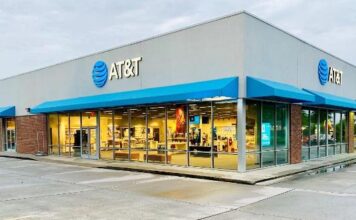 Cable companies continue to reel from subscriber loss in 2017 as consumers kept cutting the cord in favor of streaming content services, says Brendan O’Brien, CIO and co-founder of Aria Systems.
Cable companies continue to reel from subscriber loss in 2017 as consumers kept cutting the cord in favor of streaming content services, says Brendan O’Brien, CIO and co-founder of Aria Systems.
A report issued by UBS estimates that traditional video services lost about 3.2 million subscribers in 2017 and that they may lose up to four million more in 2018. In fact, the total number of pay TV subscribers that have left is at the highest rate since the trend of cord cutting emerged in 2010 with landlines being dropped.
ALSO READ: Huawei Cloud Campus webinar — join and win gifts
While cable subscribers continue to leave in droves, subscription streaming services like Hulu, Amazon Video, and Netflix are seeing substantial growth. Netflix alone now has 110.6 million paid subscribers to cable TV’s 96 million. The number one streaming service also picked up 24 million subscribers in 2017 and just reported results this week that they’ve added 7.41 million subscribers in the first quarter and their already high-flying stock price jumped. Filling out the podium is Amazon and Hulu with 117 million subscribers—altogether more than double that of cable.
All of these OTT streaming services are using infrastructure built by the Communication Service Providers (CSP) while siphoning off traditional cable TV subscribers. It seems like a disaster waiting to happen for CSPs—but their profits are remaining steady as they continue to adapt to the OTT onslaught.
Comcast Earnings Rise Despite Cord Cutting
Subscriber loss be damned, Comcast’s earnings beat projections in 2017. Comcast’s fourth quarter revenue was up 4.2 percent to $21.9 billion and earnings per share were up 8.9 percent. Much of this can be attributed to both gains in broadband subscriptions and the company’s media industry investments a la NBC Universal. Given the bandwidth demand for streaming services, the company’s addition of 350,000 high-speed internet subscribers in Q4 does not come as a huge surprise, either, and it also helped boost revenue.
Comcast’s transformation into a content provider is also raking in big bucks, as its acquisition of NBC Universal continues to be a profitable move. Universal Pictures had several big hits in 2017 including “Fate of the Furious” and “Despicable Me 3”, raking in $5 billion. Getting into the content creation business is a tack that was borrowed from the successes of streaming providers’ original franchises like “Game of Thrones”. But streaming providers are proving that betting on original content can be a bit of a gamble.
Subscribers Leave When Hit Shows End
Flexibility is one of the things consumers love most about streaming video services. You can add a service or unsubscribe at the touch of a button. There are no contractual commitments and there’s no sitting on hold with the cable company only to be harangued by a customer service rep for trying to unsubscribe. This is a blessing and a curse for original content-focused streaming services like HBO Now.
The blessing: when a new show picks up steam, millions of people can instantly subscribe. The curse: when that show ends, they can leave just as easily. When HBO’s smash hit “Game of Thrones” series seven ended this past summer, HBO Now app revenue dropped by 7 percent. After season six ended, that number was 40 percent.
While not all of the subscribers end up leaving after a hit ends, the unpredictable churn is certain to be an issue for investors and providers alike. Viewers are a fickle bunch and it’s tough to tell what the next big hit streaming series will be—or if you will have one at all. With the increase in choice and ease of service, viewers can now easily go where the top shows are and ‘pure’ content providers must hone strategies for increasing longer term customer retention.
CSPs Continuing Digital Transformation
While CSPs may be struggling with subscriber loss, companies like Comcast are proving that the transformation into full-fledged Digital Service Providers (DSPs) is possible and profitable. The streaming video subscriber boom will not likely slow down anytime soon, and this isn’t lost on CSPs either. T-Mobile acquired Level3 TV and will launch a streaming service in 2018. “We’re gonna build TV for people who love TV. This will be as big, if not bigger than the revolution we created in wireless,” said T-Mobile CEO John Legere.
Comcast and Time Warner also quietly bought stakes in Hulu recently. But Comcast’s ace in the hole could be its set-top box-free Xfinity Instant TV streaming service, which is now in beta. The catch-22 right now is that you must be a Comcast TV subscriber (and, hence, have an STB) to get the $18 a month subscription that includes live TV channels.
It turns out that cord-cutting may not be the end of the world for CSPs. However, their ability to capitalize upon providing a bevy of digital services and content will still hinge upon moving away from legacy OSS/BSS systems that stymie their ability to provide service and customer choice equal to their born-digital competitors.
Communication providers’ diversification of digital services, content, and infrastructure is only the first chapter in their digital transformation story. Once they can overcome the barriers to providing digital-age service, the remainder will be written more quickly than a season of “Stranger Things” seems to end.
About the author:
Brendan O’Brien is chief innovation officer and co-founder at Aria Systems.





